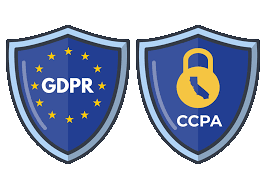In manufacturing, non-conformance reporting is used as a quality control measure to track errors and ensure that products meet standards. The primary document created to manage this function is called a Non-Conformance Report (NCR). NCRs are typically generated when a product does not meet specifications or when there is an issue with the manufacturing process. NCRs can be used to improve quality control by identifying problems early and correcting them before products are shipped to customers. Overall, NCR is an essential tool for quality management in manufacturing.
How non-conformance reporting works
These NCRs typically include information such as the date of the reporting, the name of the person who found the problem, a description of the problem, and what corrective action was taken. NCRs can be filed electronically or in paper form. Electronic NCRs can be easier to track and manage, but paper NCRs may be easier for some people to fill out and submit. Typically, electronic NCRs are managed by software suites like Manufacturing Execution Systems (MES).
The benefit of using MES for running non-conformance reporting is that the system keeps both the quality tracking in the same database as manufacturing performance metrics and inventory operations. This combined database provides managers the ability to build a more complete picture of where errors are originating from, including tracking back details from beyond where the NCR originated.
NCRs are an important tool for manufacturers to use to improve quality control. By tracking NCRs, manufacturers can identify trends and problems early and most times before products are shipped to customers. NCRs can also help manufacturers improve their manufacturing processes and ensure that products meet customer expectations when the reporting system is integrated with the factory control system like MV2.
Managing with non-conformance reporting processes on the shop floor
Non-conformance reporting can be a difficult process to manage, but there are some tips that can help. First, NCRs should be filed as soon as possible after a problem is discovered. This will help ensure that the problem is corrected quickly. It also helps ensure NCRs are accurate. Second, NCRs should be filed by employees who are trained in the firm’s non-conformance reporting process. This will further help ensure that NCRs are complete and accurate. Finally, NCRs should be tracked and managed carefully. Reliable tracking processes will help make sure that problems are identified early and corrective action is taken quickly.
NCR is an important tool for quality management in manufacturing. With non-conformance reporting processes in place and robust process oversight, manufacturers can improve their quality control processes and ensure that products meet customer expectations. Moving these to digital management through a manufacturing execution system like Paper-Less’ products makes it far less onerous. It also makes it far more productive and insightful for plant managers and manufacturing engineers.
If your firm is looking to get a better handle on quality issues on your shop floor with non-conformance reporting processes, contact us today. Our highly experienced engineers can explain how MES systems like our MV2 system can help get the most of the NCR process for your operations.


